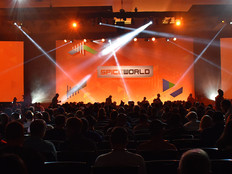SpiceWorld 2017: Small Business IT Pros Focus On Network Upgrades
In 2006, the U.S. Army retired the recruiting slogan “Army of One.” However, for many small business IT professionals, that’s still the mantra they embrace every day.
In interviews with BizTech at the SpiceWorld 2017 conference in Austin, Texas, two small business IT pros discussed their jobs, the IT upgrades their companies have made recently and how the businesses approach emerging technologies, such as the Internet of Things and virtual reality.
The conversations reveal a common but stark lesson about small businesses and the IT pros who help keep the tech running. While IoT, artificial intelligence, VR and augmented reality may grab the headlines, these IT pros are more concerned about network upgrades that help make their companies more efficient and simplify their IT environments. Though newer technologies are on their radars, they are more focused on the day-to-day grind of keeping the companies’ existing tech running.
SIGN UP: Get more news from the BizTech newsletter in your inbox every two weeks!
Network Upgrades Dominate Big Tech Moves at Small Businesses
“If it plugs into the wall, it’s my job,” said Stephen Jabs, IT manager at S2 Architecture, an architecture firm with studios in Calgary and Edmonton, Canada. Jabs is the firm’s only IT staff member, and he was previously an architectural technologist. The firm employs about 80 people, Jabs said, and he is responsible for their computers, the company’s on-premises data centers and its network technology.
Networking equipment has been on Jabs’s mind quite a bit lately. Jabs said he recently replaced all of S2’s switching infrastructure, consolidating multiple brands down to a single deployment of Cisco Meraki switches.
He had to tear out the previous network backbone and reconfigure the new switches with all the proper settings. Jabs also needed to make sure his virtualized VMware servers were backed up and running and that every phone and workstation was properly connected. To minimize the disruption to operations, he spent four hours on a Friday night working at one studio and then 12 hours the next weekend doing the upgrade at the other. “IT, you have to be flexible, you can’t always do it during business hours,” he said. Operations were temporarily affected, and S2’s on-prem Microsoft Exchange server was down, so emails were queuing, Jabs said, but all services were up and running by the start of the work week.
Jake Frederick, IT manager at WL Plastics, which bills itself as one of the largest manufacturers of high-density polyethylene pipe in North America, also has had network upgrades to contend with.
The company has at least six manufacturing locations around the country, designed to be close to shipping routes to deliver pipe quickly to customers. In the fall of 2016, the company upgraded its core network infrastructure from an old, T1-based system to Ethernet.
Unlike S2, WL Plastics uses the cloud for as much as possible, including its Enterprise Resource Planning system and Microsoft’s Office 365 for productivity. That made the network upgrade all the more necessary. “T1s are just not viable anymore, especially being cloud-heavy,” Frederick said.
Frederick, who has one IT staff member for tech support, coordinated the network changes at all the company’s locations. Those changes are now done, he said, but there are a few additional steps that need to be finished.
WL Plastics wanted the reliability of an Ethernet network backbone, Frederick said. Because each location has secondary internet connections, the longest downtime at any site was 10 to 15 minutes, he added.
Emerging Tech Is on the Roadmap, but Down the Road
According to the “2018 State of IT” report from Spiceworks, small businesses are adopting emerging technologies like IoT and AI and plan to keep doing so in the next year, just at lower levels than their larger counterparts.
That’s certainly the case at WL Plastics and S2 Architecture. Frederick said that IoT, for example, is on WL’s radar but the company is not actively investing in it. WL wants to make sure there is a solid business use before it spends money to experiment with new technology, he said. “It takes a lot of time to plan and figure out where we’re going,” Frederick added.
As a manufacturer, WL sees the value in IoT, Frederick said. Sensors that monitor its machines could be combined with analytics to perform predictive maintenance so machines can be repaired before they break down and disrupt operations. That kind of technology is “invaluable,” Frederick said, but WL is still sorting through what kind of solutions it wants to deploy.
“The budget for experiments and testing is a little bit more limited,” he said. “It’s something that we know we need, but without good direction as to what we need or what we’re looking for, it’s kind of tough” to bring in new technologies like IoT.
Yet WL might deploy such technology in the future. “The more we can avoid making scrap, the better, between time and material,” Frederick said.
At S2, Jabs said the company is considering investing in VR technology. “We try to be leading edge without being bleeding edge, because you just can’t afford to hemorrhage when things go sideways,” he said.
S2 discussed using 3D printers, which can range in cost from $1,500 to $150,000, depending on the model. Architects like the technology but clients find it less useful, Jabs said. So S2 decided it would be better to invest in VR headsets so that clients can see virtual simulations of buildings.
It will likely be another six months before S2 is “getting our feet dirty” with VR, Jabs said, but the company is headed in that direction. S2 wants to use emerging tech to enhance the experience for its customers.
“As architects and designers, we can visualize spaces and know what a building looks like from a set of drawings,” he said. “Most people don’t have that skill.” Visualization artists can do computer renderings of buildings, but allowing clients to walk through those is “the wave of the future.”









